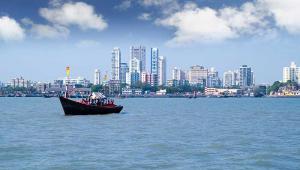The fund credited trade gains arising from low commodity prices, sound policy, and reduced external risks for the strong outlook, which puts India’s growth at 7.3% this fiscal year, picking up to 7.5% in the next. The fund is also “broadly supportive” of the budget announced by the country’s finance minister on Monday.
However, the IMF said it was concerned about India’s public sector debt, an uptick in non-performing and impaired loans, weak corporate and bank balance sheets and big fiscal deficits.
“Against this backdrop, [IMF executive board] directors underscored the need for continued vigilance, growth-friendly fiscal consolidation, and sustained reforms to enhance the resilience of the economy and bolster potential growth,” the fund said.
Addressing supply constraints and further improving the business environment also remain “important priorities”, according to the fund, and would work to reduce poverty.
Tim Richardson, the IMF’s resident representative in India, said the fund is “broadly supportive” of India’s fiscal stance and the budget, which focused on rural development and infrastructure.
He said that the IMF welcomed this emphasis on capital investment, as well as a number of other structural measures announced in the budget including to strengthen the public-private partnership framework and to eliminate inefficiencies in the country’s social benefit regime.
However he noted the fund would like to see an increase in social spending, supported by a rise in revenues from improved tax administration and a broadening of the tax base.
While directors welcomed improvements in the quality and efficiency of public expenditure, Richardson noted some fiscal risks.
Public sector debt, at over 60% of gross domestic product, is a “bit on the high side for emerging economies”, said Richardson, adding that the fiscal deficit also presents a threat.
While India’s central government deficit is at 3.5% of GDP, the IMF envisages an overall deficit of 6.5-7% of GDP when the state government deficits and the central government deficit are taken together.
Other areas the IMF would like India to prioritise include reforms to remove supply-side bottlenecks in the agricultural and power sectors and to facilitate land acquisition – a controversial issue in India – as is another IMF recommendation to reform the labour market.
Other measures “crucial” to achieve medium-term fiscal deficit targets and to create space for priority capital and social spending include further reforms of fertiliser and food subsidies and a well-designed goods and services tax.
The IMF would also like India to reduce its stake in public sector banks, and for increases in bank supervision, improvements to corporate governments and changes to capital buffers.
One external risk to India’s strong outlook is global financial market volatility, but Paul Cashin, the IMF’s mission chief in the country, noted that India is the best positioned emerging economy to handle this thanks to its flexible exchange rate and high reserves.













